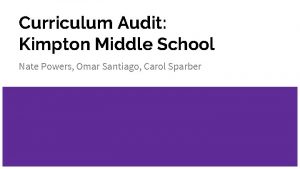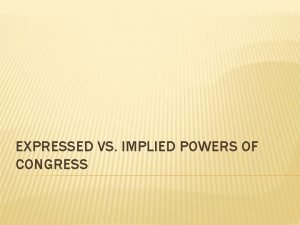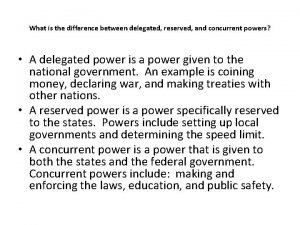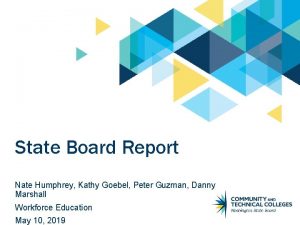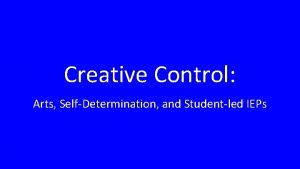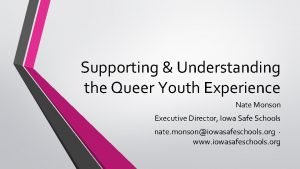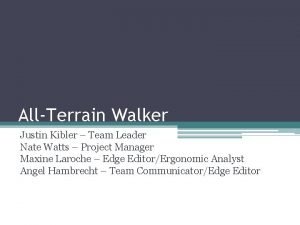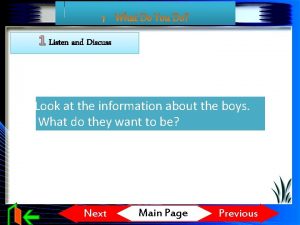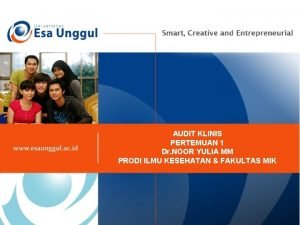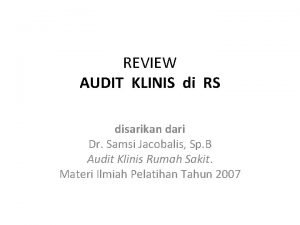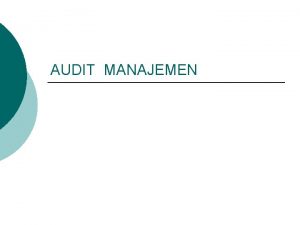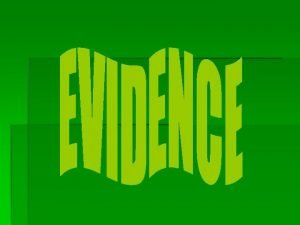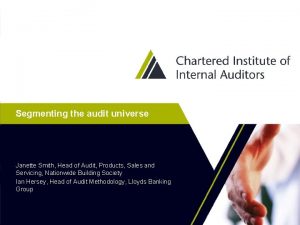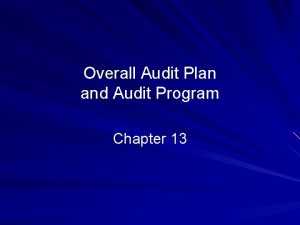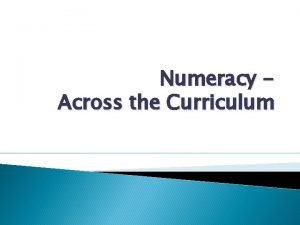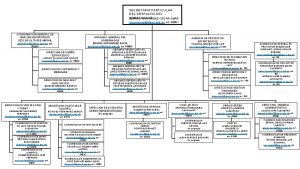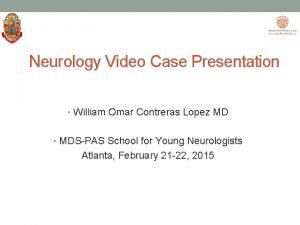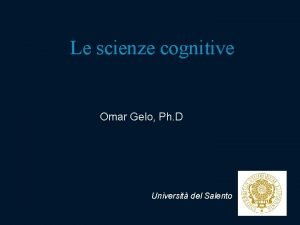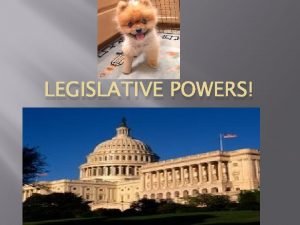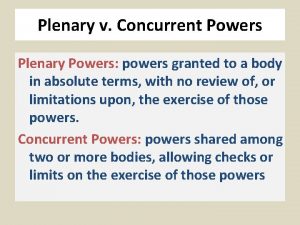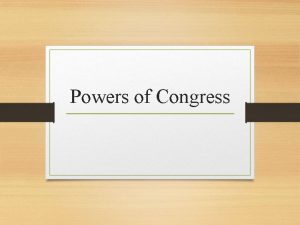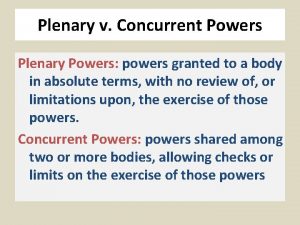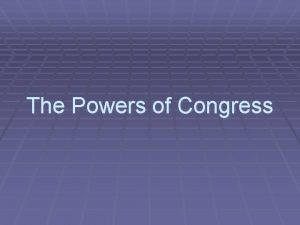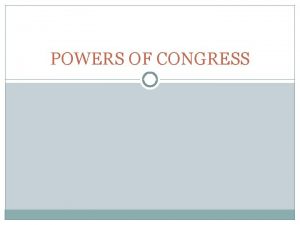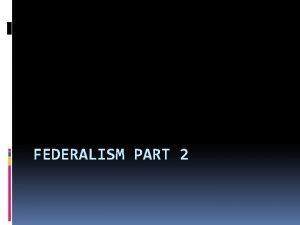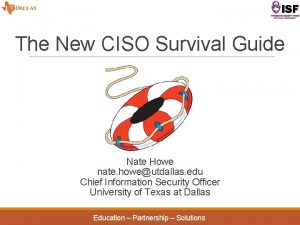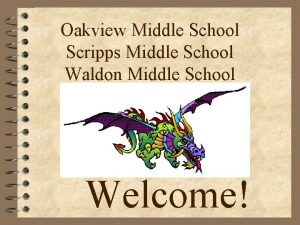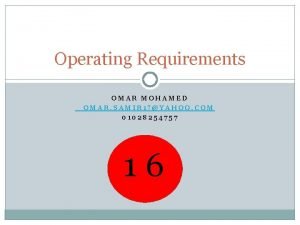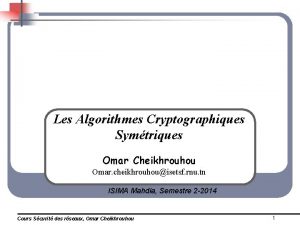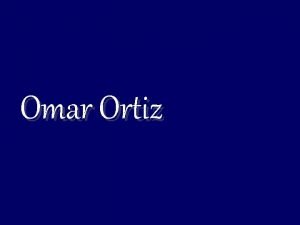Curriculum Audit Kimpton Middle School Nate Powers Omar









































- Slides: 41

Curriculum Audit: Kimpton Middle School Nate Powers, Omar Santiago, Carol Sparber

Board Policies

Overview of Findings After analyzing data from the surveys in regards to Board Policies, one glaring concern has been raised. While looking at the responses one consistent response came about. The majority of faculty members neither agree or disagree to the questions that were raised. Other responses suggested that access to the Board Policies is very hard, and employees of the district do not know where to find them. The lack of access suggests that faculty will not have a clear understanding of the Board Policies in regards to the curriculum. The survey indicates that since it is hard to locate and view the board policies in order to understand them in relationship to the curriculum, many faculty members do not know how to answer the questions in the survey because they are not exposed to the board policies.

3 Strengths 1. Many faculty members believe that there is a comprehensive set of board policies that establish a framework for the curriculum. 1. Policy links budget development to curriculum so the curriculum leads versus the budget leading. a. The responses reflect that faculty members do not really know where the money is being spent, which yes can come off as a challenge or problem, but I believe that they answer this way because they do not feel like money and the budget is being abused. 1. Many faculty members do not have a clear understanding of what policies contain statements regarding alignment testing and textbook adoption. a. This shows that many faculty members do not feel forced to “Teach to the Test”, and many educators do not believe that the textbook should be used as a form of the curriculum.

1 Challenge In regards to school board policies, many responses reflected that faculty members are not aware of what policies are in place and how to access them. Many responses given responded with an “I don’t know”. This presents itself as a problem. If faculty does not know what the board polices are or how the board wants to operate in terms of curriculum and development then there will be a disconnection between expectations and presentation.

Problem Based Solution Require all Instructional Leaders and recommend faculty members to participate in school board meetings on a regular basis. “Periodically report on the progress of plans at public board meetings. ”(Downey, 2009) “Incorporate a process to be used to make necessary adjustments in plans. ”(Downey, 2009) “Implement administrative monitoring practices that provide information regarding how the implementation of plans is affecting classroom instruction and increasing student achievement. ”(Downey, 2009)

Administrators & Supervisors

Overview of Findings While looking at the data collected from the survey one steady idea was gathered. Educators in Kimpton Middle School are satisfied with the role that the Administrators and Instructors play in Curriculum development. Consistently, staff members answered with the belief that Administrators believe student growth, especially through Value-Added scores is important. Critical thinking skills and social growth are a focus that the school wants to implement in order to follow our Vision & Mission which is to provide a 21 st Century Education to every student. Participants who were surveyed believe that families and those in the community want what is best for students whether that is through college or career with an emphasis on building a fulfilling and successful life and contributing to society.

3 Strengths 1. 83% of the faculty believe that Principals know how to monitor the delivery of curriculum in their schools. a. Educators are comfortable with the administration in regards to whether or not they can successfully help coach the educators. 2. 75% of the faculty believe that Principals know how to desegregate test data and work with teachers in connecting it to the curriculum. a. Many teachers believe that the administration is strong in relation to the use of RTI and analyzing test data. Administration can hold beneficial dialogue with the educators on getting the best out of every member of the team. 3. Many of the participants who were surveyed have a strong belief that both the Principal and Assistant Principal have a core conviction that adding value to our students is important.

1 Challenge When analyzing the responses regarding how faculty views the impact and aspirations of the Principal and Assistant Principal, many members hold the leaders of Kimpton Middle School in high regards. Faculty members are generally happy with the leadership team that has been assembled. The one challenge that can be analyzed from the data follows the question “What does the Principal want students to learn? ” Many of the responses include the idea that leaders are only interested in students following and learning the Standards. The belief is that Principals only hold the Standards at as important, not developing the student as a whole.

Problem Based Solution Require all Instructional Leaders to implement Project-Based Learning to broaden learning and skills for a better understanding of what it means to be a 21 st Century Learner. “PBL and invitations can be applied in many disciplines and content areas such as biology, physics, geology, mathematics, music, art, education, economics, medicine, and so on. They can be used to answer inquiry questions…”(Lee, 2015) “Partnership is understood as a relationship in which all involved are actively engaged in and stand to gain from the process of learning and working together to foster engaged student learning and engaging learning and teaching enhancement. Partnership is essentially a way of doing things, rather than an outcome in itself. ”(Fieldsend-Danks, 2016)

The Curriculum

Overview of Findings Data collected from the survey indicates overall teacher satisfaction with the curriculum used at Kimpton Middle School. As a whole, teachers indicated that they follow the curriculum and it is aligned with the mission and vision for children. Survey results indicate that the curriculum is functional and appropriately aligned with assessments. Integration across and within subject areas was consistently rated high throughout the survey. Furthermore, multidisciplinary approaches are used to organize standards from the disciplines around a theme allowing for flexibility in the level of intensity of instruction.

3 Strengths 1. 90% of the faculty believe that teachers commonly integrate reading, writing, and oral communication in language arts. Integration in science and history were also highly rated (81% and 66% respectively) indicating that integration within content areas is a strength at Kimpton Middle School. 2. 77% of the faculty believe that the children are engaged in inquiry-based work in school. 3. 70% of the faculty believe that the curriculum is aligned with standards versus textbooks. These strengths indicate. . . quality standards-based planning and instruction that deliberately connects curriculum through integrated instruction and engages students in meaningful inquiry-based learning that positively promotes academic achievement (Drake, 2012).

1 Challenge The primary challenge suggested by the survey results indicate that families are not involved in developing the curriculum. 75% of the teachers responded that family involvement was lacking.

Problem Based Solution There is a need for families to be involved in helping develop the curriculum. The district needs to increase efforts to reach out and develop stronger connections with families in the community. The value of increasing family and community members’ sense of engagement and ownership in children’s education can augment and reinforce behaviors responsible for improved student outcomes. The research shows that family involvement leads to increased student achievement (Gordon & Louis, 2011). Districts should take an active role in teaching parents and other community members how to be involved in education. The parent’s role in supporting student learning is important and can be supported through parent meetings and/or workshops. Discussions can help create a sense of ownership among all staff parents, and other community members, ultimately increasing student learning (Downey et al. , 2009).

Tests & Assessments

Overview of Findings When looking at the results from the survey, there was some really good information regarding tests and assessments that was clear and evident. Many of the responses showed the audience either agreeing or disagreeing with the question. While many people that there areas of the curriculum that are not assessed or evaluated, a strong majority of the respondents stated that teachers used test data to alter their work and link it back to the curriculum in order to achieve an enhanced student performance. Results also indicate that tests measure more than the lower levels of cognition and attitude development. Lastly, results emphasized the fact that teachers don’t use test data to unfairly group students by race, sex, among others that discourage them from learning. All the while, one major challenge according to the results indicate that test results aren’t clearly communicated with the public.

3 Strengths 1) Test data is regularly disaggregated and linked back to the curriculum to ensure enhanced student performance a) 10 out of the total 11 responses agreed to this question b) This identifies the idea that teachers are reviewing the data from tests, breaking it down, and understand new ways on how to reach students and differentiate instruction in order to increase student performance 2) Teachers make systematic use of test data to alter their work a) 6 out of the 12 responses agreed with this while 1 strongly agreed b) Teachers utilize information that they see from tests and if they need to differentiate instruction, they do. 3) Test data is NOT used to unfairly categorize students by race, sex, or to relegate groups of students to a system of grouping that discourages them from learning

1 Challenge The public is systematically informed about the test results and strengths and weaknesses of tests. ● 8 out of the 11 responses stated they simply “DON’T KNOW” ● Responses from the questionnaire show that the public simply is not informed about test results because they do not know ● This proposes the potential problem and belief that the education system at the school is not good due to the lack of public information of test results, which can cause parents to become angry, and in worse case scenario, send their child to a different school

Problem Based Solution Create a twenty-first-century knowledge online management system and evidence based practice at the district and school levels where districts press for a more collective analysis of the test data and utilize that system to share with the public. ● Surveys indicate that people value receiving information on their schools (Owens & Peltier, 2002). They want to know how their schools are doing and are interested in receiving more detailed information (Owens & Peltier). ● Data-driven decision making can support schools and districts to facilitate more informed decision making, enhance overall school performance, and improve student achievement. Furthermore, it can help to engage family and community in the process of addressing achievement gaps, improving teaching and learning, and motivating students (Wayman, Stringfield, & Yakimowski, 2004).

Budget Development

Overview of Findings The findings of budget development were extremely unique as for every question, the majority of the responses were neutral. There was never any question that had too many strongly agrees or strongly disagrees. The results show that many of the respondents are not aware of what is going on financially within the district. They are able to understand that things are going well by what they visibly see within the school community and assume that the dollars are going where they are supposed to be going. Nevertheless, it is only their belief and the data indicates that there should more a more concrete way to share the information to the public in regards to the budget.

3 Strengths 1) There is sufficient detail in the school’s budget to link it to curricular programs and costs a) Approximately 46% of the respondents believe this to be true while additionally 46% of the respondents take a neutral stance b) According to the data, there is enough information that reveals the money and costs needed for curriculum programs 2) The school’s fiscal priorities are linked to a formal planning process a) Approximately 46% of the respondents believe this to be true while additionally 46% of the respondents take a neutral stance b) According to the numbers, there is a planning process that takes place in order for school leaders to align their fiscal priorities

1 Challenge Due to the fact that the majority of the questions answered fall under a neutral response, a common theme is that most people quite frankly do not know or may simply be misinformed in where money from the budget is going and if it is supporting curricular priorities. Again, we see this information gap between school leaders in the district as well as the public in providing detail regarding the budget.

Problem Based Solution Have monthly meetings in schools that include all stakeholders (school leaders, administration teams, parents, teachers, community members, student government teams) to share data regarding the budget and provide monthly updates in a clear and visual manner on where dollars are going and if they are going to the right places within the school/district community. ● “Staff must take the lead to provide stakeholders the data and other information they need to be productive partners around student achievement” (Henderson & Mapp, 2002) ● “Information sharing must be transparent. Data must be clear, concise, accurate, and meaningful” (Henderson & Mapp, 2002) ● “When parents and other community members advocate for the kinds of systematic changes that can help sustain improved outcomes, like dedicated funding, schools and districts are more likely to focus on these changes and thereby be able to sustain recent improvements” (Henderson, Jacob, Kernan-Schloss, &

Productivity

Overview of Findings The findings for Productivity were also interesting to note some strengths and one glaring challenge. Many of the responses showed the audience either agreeing or disagreeing with the question. Nevertheless, the findings show that school leaders and teachers understand for the most part the fact that dollars are allocated in order to support the sole learning of the child. Data indicated that if a program hasn’t been working, it is either revised or completely eliminated from the school. Yet, the glaring problem here is that students lack information regarding the fact that dollars are being utilized in order to enhance their education.

3 Strengths 1) Programs that have not improved over time have been revised and or eliminated completely a) 8 out of the 11 respondents (73%) agreed with the fact that revisions are made from programs that haven’t improved over time b) 7 out of the 11 respondents (64%) agreed or strongly agreed with the fact that programs that haven’t improved over time have been completely removed 2) School leaders know dollars spent have resulted in improved student learning a) 6 out of 12 respondents (50%) agreed with this question 3) Teachers know dollars spent have resulted in improved student learning a) 7 out of the 12 respondents (58%) agreed with this question

1 Challenge One noticeable challenge that was obvious throughout the Productivity section of the audit was the sole fact that students lack information regarding how dollars being spent is essentially improving their education. Additionally, students are not aware of how dollars spent in terms of planning priorities have resulted in obtaining desirable results 1) 42% of the respondents stated they don’t know while 33% of the respondents stated they disagree with the fact that students have information regarding how dollars being spent 2) 55% of the respondents stated the either disagree or strongly disagree while 45% of the respondents stated they don’t know how dollars spent in terms of planning priorities have resulted in obtaining desirable results

Problem Based Solution Establish a student-led committee or student government team where they sit in on monthly meetings in order for students and all stakeholders receive information on the allocations of dollars sharing how dollars spent in terms of planning priorities have resulted in obtaining desirable results. ● “Meaningful student involvement should expand the common expectation of every student to become an equal and active partner in school improvement” (Fletcher, 2001) ● “Students should possess the knowledge and ability needed to make informed decisions” (Pauley, 1996) ● “Including students as representatives on boards and committees takes classroom learning into the community and opens doors for many more students to become involved in the policies and practices that shape their schools” (Fletcher, 2001)

Reflection: Nate Powers

Completing a Curriculum Audit is strenuous work. Asking teachers through survey is the best option when trying to incorporate all of the different questions that need to be answered in the Audit. Many questions and topics in this audit are not normal topics that teachers are exposed to so were received a number of answers that were surprising. One of the surprising topics included the lack of family involvement. Going into the audit I knew that parent involvement was a struggle however the level that it is at is higher than I anticipated. When analyzing the curriculum audit I was made aware of the importance that educators focus on the curriculum and test scores in relation to their instructional strategies. I never knew it was at the level of focus that the survey suggests. I agree that the statement that “the true measure of educational attainment is what students do with what they learn and when they can do what they want to do”. As educators our goal at the end of the day is to follow the vision of the district in which we create citizens who can be productive parts of society in the 21 st Century. My belief is that the human vision of schooling means to educate and produce creative, critical thinkers who can accomplish whatever they strive to become with confidence and strength in their field of choice. A school’s philosophy regarding learning, identity, and cultural responsiveness influences the understanding of the curriculum in many aspects of development. Overall the philosophy should reflect what is important to society and the community as well as how to create the most productive, moral, critical, and creative individuals at the same time.

Curriculum can be created and formed in a way that helps build community both in the school and outside of the school. The focus of what the curriculum covers is important to the growth of not only the student, but society as a whole. If the focus of the curriculum is not beneficial or productive for the community than the idea of “community” cannot grow and form into what we envision it to. We can “Teach to the Test” or we can create a curriculum focus on individual growth and creativity. Different ideas of what should be a part of a curriculum causes confusion and insecurity as to what is important for student to know and learn. This can lead to lack of growth, creativity, and individuality. Families, teachers, administrators, and students should be on the same page when it comes to what is important in the curriculum. Effective curriculum encompese many different ideas including the idea that “It is critically important to take stock of the strengths that students and their families represent, in order to see the full picture of the possibilities that exist for supporting student success within schools. ”(Marshall, 2009) and “Meaningful student involvement should expand the common expectation of every student to become an equal and active partner in school improvement” (Fletcher, 2001) The one glaring discovery that I found out about Kimpton after completing this audit was the huge gap in relationship between teachers and parents in the community. I was aware that it was a problem but not to the level that it is. After completing the audit I find that it is important to understand the strength that can come from relationships between parent and educator. The teamwork that can come from these two parties can develop a strong and powerful opportunity for learners in the school.

Reflection: Omar Santiago

https: //youtu. be/Lxff. Hy 4 d. Av. Q

Reflection: Carol Sparber

Reflection: The curriculum audit, once again demonstrated the power of using a survey and how it can reveal specific strengths and weaknesses. One thing that surprised me was the responses to the questions regarding diverse perspectives. I expected this to be the area of challenge however the responses were distributed somewhat evenly. Reviewing the curriculum audit deepened my understanding as an aspiring school leader by broadening my perspectives of what should be included within the curriculum. Prior to reviewing the audit, I thought a review of the curriculum would be focused on depth and complexity of academic content. I’d never considered that curriculum should include instructional strategies and interactions as well as content. I’ve always thought about these as separate ideas. I agree with the statement that “the true measure of educational attainment is what students do with what they learn and when they can do what they want to do”. As teachers we strive to move our students to the point of applying what they’ve learned. The measure of educational attainment can’t be captured in a test score on a standardized test. We need to prepare our students for the future with an education that is meaningful for the 21 st century. The human vision of schooling children should entail empowering all children on multiple levels. Empowerment encompasses a curriculum that includes competence, accomplishment, confidence, and efficacy (Gay, 2010).

Reflection Continued: A school’s philosophy for developing curriculum needs to embrace more than just academic achievement. The curriculum needs to embrace academic, social, emotional, psychological, cultural, moral, and political instruction (Gay, 2010). Curriculum reflects personal beliefs, experiences, and pressing societal issues and different conceptions of curriculum can affect instructional programming, that ‘sets a tone’ for the district. Curriculum can either divide a school community or become a catalyst of forward thinking to bring a school community together. It should be culturally responsive and create an environment for learning that influences the entire school community. Effective curriculum must embed diverse perspectives in order to create a bridge between academic learning in school and the socio-cultural lives and experiences of the community by (Gay, 2010). Curriculum that is consistent has continuity, and flexibility in adaptation enables teachers to mix methods and materials to meet the diverse needs of learners and improve achievement. “Children are not the means to obtain better test scores… rather, children are the ends of what education is about in the first place” (English, 2010). From this experience, I learned that teachers at Kimpton Middle School believe the curriculum is aligned with the school's vision and mission and the state standards and the students are engaged in quality instruction (e. g. , inquirybased work, multidisciplinary approaches). There is a need however to reach out to families for help in developing the curriculum. I realize now that curriculum includes more than just academic content. Quality curriculum must also incorporate social, emotional, cultural, and moral development using instructional strategies that allow for flexibly teaching. This experience will influence my teaching because I understand the breadth a quality curriculum must contain. I will also reevaluate my teaching to ensure that I incorporated components of effect instruction in order to

References Downey, J. , Steffy, B. E. , Poston, W. K. & English, F. W. (2009). 50 ways to close the achievement gap. Thousand Oaks, CA: Corwin Press. Drake, S. M. (2012). Creating standards-based integrated curriculum (3 rd ed. ). Thousand Oaks, CA: Corwin Press. Fieldsend-Danks, P. (2016). Art, Design & Communication in Higher Education: The Dialogues project: Students as partners in developing research-engaged learning, Vol. 15 issue 1, page 89 -102. doi: 10. 1386/adch. 15. 1. 89_1. Fletcher, A. (2001). Meaningful student involvement: an idea guide. Olympia, WA. Office of Superintendent of Public Instruction Gay, G. (2010). Culturally responsive teaching (2 nd ed. ). New York, NY: Teachers College Press. Gordon, M. F. & Louis, K. S. (2011). Linking leadership to student learning. In M. Grogan (Ed. ), Educational Leadership (3 rd ed. ). San Francisco, CA: Jossey-Bass. Henderson, A. , Jacob, B. , Kernan-Schloss, A. , & Raimondo, B. (2004). The case for parent leadership. Arlington, VA: KSA Plus Communications Henderson, A. & Mapp, K. (2002). A new wave of evidence: The impact of school, family and community connections on student achievement. Austin, TX: Southwest Educational Development Corporation

References Lee, C. J. (2015). Journal of Curriculum Theorizing: Project-Based Learning and Invitations: A Comparison, Vol. 30 issue 3, page 10 -16. Marshall, C. , & Olivia, M. (2009). Leadership for Social Justice: Making Revolutions in Education. (Second ed. ). Boston, Mass. : Pearson Education Inc. Owens, T. , & Peltier, G. (2002, Spring). Communicating with parents: Parental perceptions of state school accountability reporting. Education, 122(3), 595– 598. Pauley, C. (1996). “The view from the student’s side of the table. ” in D. Sands & M. Wehmeyer (Eds. ) Making it happen: student involvement in planning, decision-making, and evaluation. Baltimore, MD: Brookes: 123 -128 Wayman, C. , Stringfield, S. , & Yakimowski, M. (2004, January). Software enabling school improvement through analysis of student data (Report No. 67). Baltimore, MD: Center for Research on the Education of Students Placed at Risk, The Johns Hopkins University.
 Nate powers
Nate powers Hodan yusuf omar
Hodan yusuf omar Bradley middle school
Bradley middle school Was the united states on the axis powers or allied powers?
Was the united states on the axis powers or allied powers? Central powers wwi
Central powers wwi Expressed and implied powers
Expressed and implied powers Expressed vs enumerated powers
Expressed vs enumerated powers Implied powe
Implied powe Delegated powers vs reserved powers
Delegated powers vs reserved powers Informal checks on the president
Informal checks on the president Kathy goebel
Kathy goebel Nate conger
Nate conger The true living god
The true living god Dr nate booth
Dr nate booth Nate rifkin
Nate rifkin Nate mantua
Nate mantua Nate plasch
Nate plasch Naté dearden
Naté dearden Nate parsley
Nate parsley Nate bard
Nate bard Nate monson iowa safe schools
Nate monson iowa safe schools Nate ramirez
Nate ramirez Nate watts
Nate watts Omar hamdan lives in tabuk.
Omar hamdan lives in tabuk. Perbedaan audit konvensional dengan audit berbasis risiko
Perbedaan audit konvensional dengan audit berbasis risiko Clinical meeting
Clinical meeting Beda audit medis dan audit klinis
Beda audit medis dan audit klinis Penyelesaian audit dan tanggung jawab pasca audit
Penyelesaian audit dan tanggung jawab pasca audit Konsep dasar audit
Konsep dasar audit Perbedaan prosedur audit top-down dengan bottom-up
Perbedaan prosedur audit top-down dengan bottom-up Meaning of auditing
Meaning of auditing Perbedaan audit konvensional dengan audit berbasis risiko
Perbedaan audit konvensional dengan audit berbasis risiko The word auditing is derived from the latin word
The word auditing is derived from the latin word What is the audit universe
What is the audit universe Overall audit plan
Overall audit plan Numeracy across the curriculum audit
Numeracy across the curriculum audit Omar chmaissem
Omar chmaissem David bernal hernandez
David bernal hernandez Omar hajjam citati
Omar hajjam citati Opsoclonus myoclonus syndrome
Opsoclonus myoclonus syndrome Omar gelo
Omar gelo Omar janjua
Omar janjua
